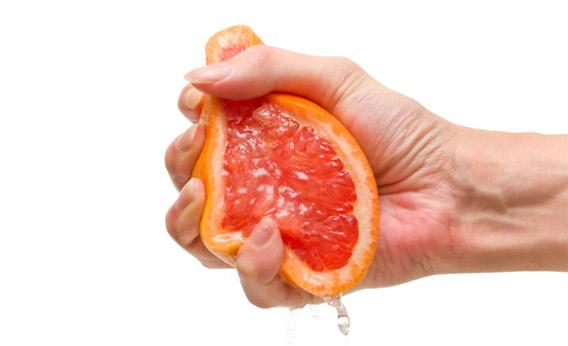Bitter news: citrus fruits linked to higher rates of melanoma.
 For the video version of this article, click here.
For the video version of this article, click here.
Browsing through article titles this week, my eye caught one from the Journal of Clinical Oncology with the words melanoma and citrus fruit. Not worth looking at I thought, clearly a study linking citrus intake with melanoma is hopelessly confounded. People who eat citrus fruits are probably healthier in general, have better access to care, etc - clearly theyll have lower melanoma rates.
But then I read the abstract, and, go figure - people consuming more citrus fruits had higher rates of melanoma. This was worth a deeper dive.
The background here is that all citrus fruits contain compounds called psoralens. Psoralens are photo-reactive chemicals and, in pharmacologic doses, are used to sensitize the skin to UVA radiation in the treatment of psoriasis, for example. When exposed to UV light, these compounds can intercalate into DNA, causing mutations, so there might be some biologic plausibility here.
That said, the dose you take as part of PUVA therapy is the equivalent to what youd find in about 10,000 liters of grapefruit juice
But lets push on. Here are the details:
Harvard researchers used two large, prospective databases: the Nurses Health Study and the Health Professionals follow-up study. Combined, these studies comprised about 170,000 people, but after applying various exclusion criteria (including excluding anyone who wasnt white), they had around 105,000 individuals to study. After a whopping 25 years of follow-up there were about 2000 cases of melanoma. They correlated answers from a food frequency questionnaire with subsequent melanoma incidence. Bottom line? A dose-response relationship, with the highest category of citrus eaters (>1.6 times per day) having a roughly 50% increase in the rate of melanoma.
Surprisingly, the annual UV exposure and number of sunburns werent different among the citrus consumption groups - so were not seeing a Florida effect here.
The authors strengthened their findings by looking at the association of other fruits and fruit juices to melanoma (none found), and looking at the association between citrus fruits and other types of cancer (none found), but there were still a couple of odd findings.
When they broke down the citrus fruits, they found that grapefruit, but not grapefruit juice, was associated with melanoma. Conversely, orange juice, but not oranges, were associated with melanoma. They argue that orange intake in its non-juice form was so rare that they didnt have power to detect a link, but we dont get numbers to support that, and frankly, Id be surprised if grapefruits are getting eaten more than oranges in this country.
Now, if you want to throw out a study, you can always argue (as many have) that food frequency questionnaires are terrible instruments. But even taking the study at its face-value, let me give you some data the authors dont include directly. The incidence of melanoma in this study was 7 cases per 10,000 individuals per year. To prevent one of those cases, youd need to convince around 2500 people who eat a lot of citrus to stop, whereas youd only need to convince 140 people to wear sunscreen. My advice? Keep your grapefruit juice, and wear a hat.